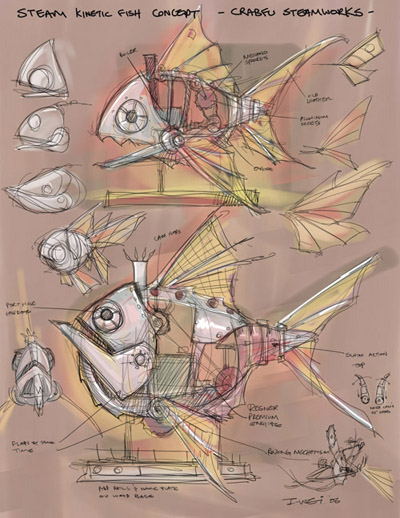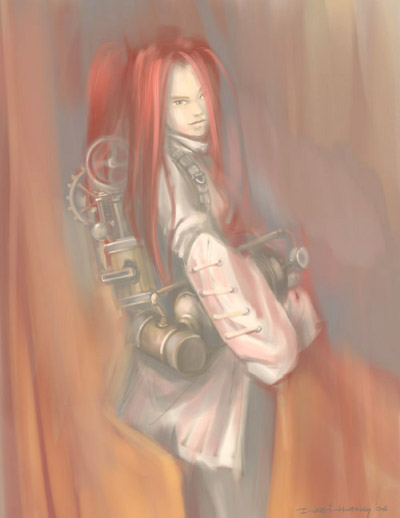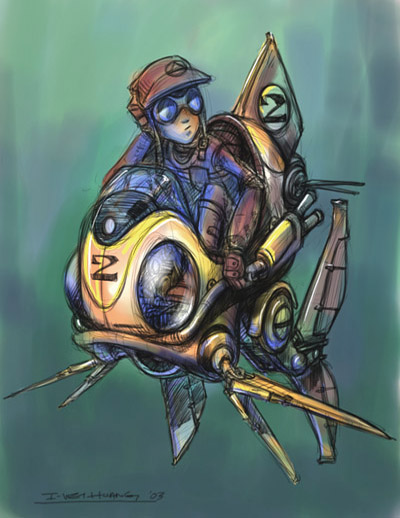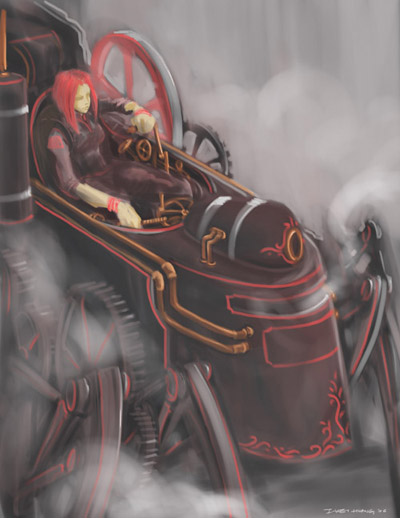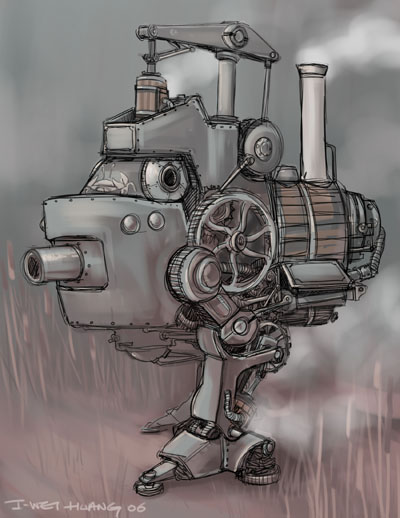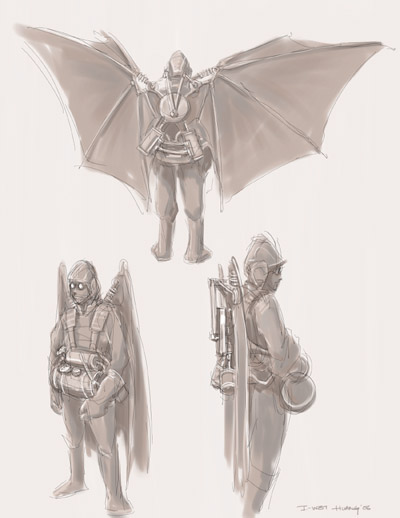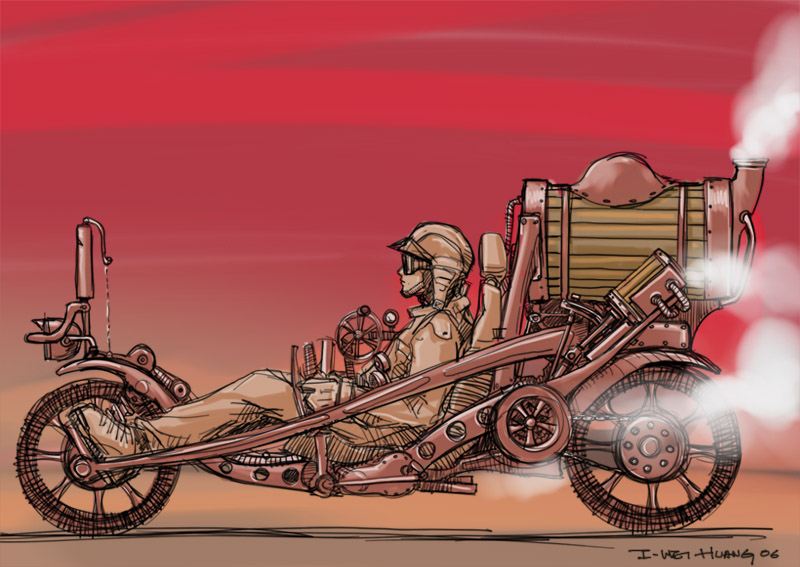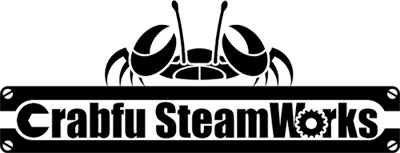
INFO & FAQ
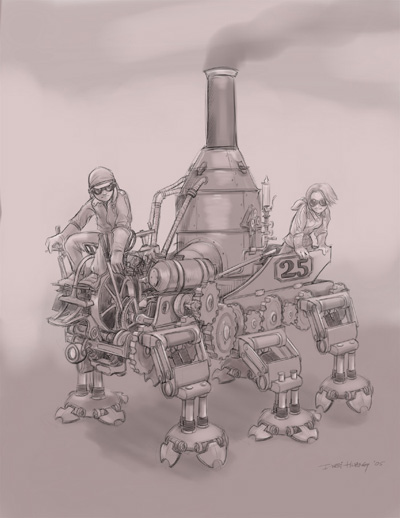 Steampunk for real!
Steampunk for real!
I'm an artist first and foremost, you
can check out some of my artwork and animation at Here.
Doing something creative and unique is just part of my nature. I'm
interested in old tech, but with a twist, in the spirit of steampunk.
But form follows function, these ideas must work, otherwise it won't
matter how cool they look. I wanted to build the first of its kind
using the power of steam, and wacky / silly ranks high in my book....
About
live steam:
These
steam machines are real miniature live steam engines. Principles
are simple, heat + water = steam, steam pushes pistons and
provides power in a circular motion.... how you harness that work is up
to you :) I use mainly stationary or marine engines to start. They use
alcohol, gas, or solid fuel tablets for heat, and requires
oiling on each run. Distilled water is recommended, and steam
pressure can build up around 1 to 3 bars, or around 10-40 psi. They
have safety valves which releases the steam at
a certain pressure, as not to "blow up", and typical running time,
depending on the machines, is
anywhere between 5-30 minutes.
Design process:
I have no machining skills or
equipment, the only power tool that I use is my
trusty Dremel. Therefore I spend a lot of time finding the right
parts to build with. I frankenstein as much existing proven
mechanics from toys or R/C vehicles as possible. Meccano / erector sets
makes for relatively quick proof of concept, and I try to use them for
support as well as mechanics (the walker is made of entirely from
meccano parts). I usually start with pulleys and bands, as they are
easy to work with, then upgrade them to sprockets and chains once
proven. Finding the right gearing ratio for the job is a tricky
process, these steam engines have high RPMs but low torque.... they
stall easily, put your pinky on the flywheel with the slightest
pressure and it stops. Over time I've developed a sense of how much a
machine must be geared down to perform the work, based on the engine
and weight. But gearing is still largely a trial and error
process, and requires quite a bit of time to tune it.
Now on with the Frequenly Asked Questions:
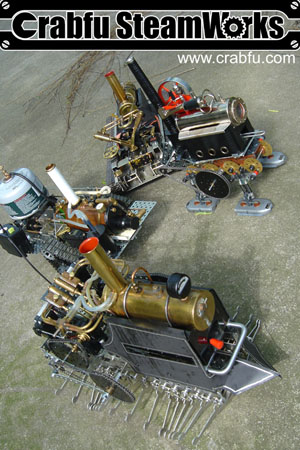
A: Yes.
The locomotion is steam powered. Water is boiled in the boiler,
producing steam pressure which powers the pistons. Here is a PIC
with the parts of the Steam Trilobite Tank explained
Q: What
made you decide to make these?
A: I'm
interested in old Victorian tech and Steampunk. After getting my
first steam engine, I was fascinated by how it runs. However, it was a
stationary engine, and did not do anything but run on a platform. I
then tried to look up where to buy cool r/c steam vehicles and robots,
then realized that no one made them. So I started making them :)
Besides, I needed a good reason to play with fire.
Q: Do you sell these?
A: Not yet. Most of the parts that I have
used to make these machines are hard to come by, so not easily
reproduced for sale. However, Joe Klann of mechanicalspider.com and I are currently working on a
steam spider, which uses his patented leg linkages, with in mind to
produce them for sale.
Q: Are these robots?
A: That depends on how you define the term Robot. I did not
coin these machines "Steam Powered Robots", "Steambots", or "Steampunk
Robots", other people did. I guess at least some members of the
robotics community accepts them as robots, after giving me 2 gold
medals at RoboGames 2006 :)
Q: How long have you been doing this?
A: I got my first steam engine around October of
2005. So on the average, I produce one per
month. Some are super simple that takes a few hours, and others
are more complex that spans months.
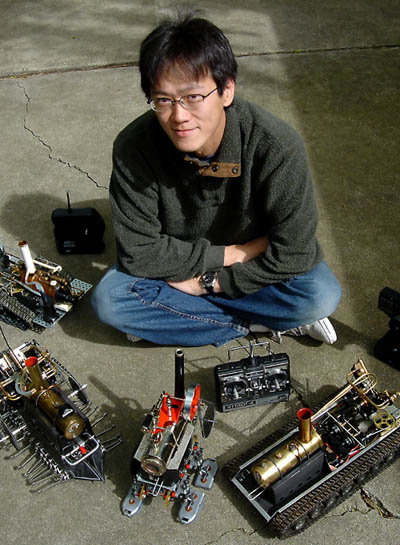
Q: What is the fuel?
A: Fuel tablets, denatured alcohol, or
propane/butane gas, to heat up the water to a boil. I've converted most
of my fuel tablet engines to alcohol, because it burns hotter, and
costs a lot less.
Q: What
tools do you use to make them?
A: I don't yet have any machine tools. I mainly
use my dremel, sometimes a power drill, and jig saw. The rest are hand
tools. I am planning on learning and using a Sherline CNC mill
soon.
Q: How long do they run for?
A: Anywhere from 5 minutes upwards to 30+ min,
depending on the machine
Q: Do they use batteries?
A: Although some do use batteries for servos for
r/c control, it is not for locomotion. The drive power in all of these
steam machines are purely steam powered.
Q: Can't you generate electricity from steam, and
not use batteries at all?
A: The short answer is no. Yes, you can easily
generate electricity with steam engines, using a dynamo. However, I
have no power to spare, as these engines are weak and can just barely
power itself along. And the biggest problem is, you need to servos to
control a valve for the engine to start, yet you need the engine first
to generate electricity for the servos. These marine steam engines that
are set up for servo forward and reverse, are not constant running. The
forward and reverse are done with lever (connected to a servo) and it
pipes the steam in the cylinder one way or the other, and not
constantly running to maintain electricity.
Q: Where do I start if I want to make these
myself?
A: I recommend starting small and simple. Caution
must be taken with dealing with fire, steam, and pressure, there is
just no substitute for experience. Take your time and start with simple
engines and mechanics. Don't try to tackle on a full on walking
machine, or radio controlled steam powered robot, as your first
project. Lots of good resources are here on my LINKS
page.
Q: Why the name Crabfu?
A: Crab Fu was an
animated short that I created in 2004. I am an animator / concept
artist by trade, currently working in the video game industry. When I
started getting into making steam powered contraptions, I needed a
handle to use in forums, so I started using crabfu, and the name just
stuck.
Video interviews: Make
Podcast,
NBC TechNow

 Steampunk for real!
Steampunk for real!

